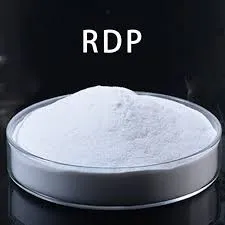
Dec . 03, 2024 16:00 Back to list
hydroxyethyl cellulose solubility in ethanol
Understanding the Solubility of Hydroxyethyl Cellulose in Ethanol
Hydroxyethyl cellulose (HEC) is a non-ionic cellulose ether widely used in various industries, particularly in pharmaceuticals, cosmetics, and food. Known for its unique properties, including excellent film-forming capabilities, thickening, and stabilizing abilities, HEC has gained significant attention in formulating various products. However, one of the critical factors influencing its efficacy in applications is its solubility. This article will explore the solubility of hydroxyethyl cellulose in ethanol and its implications for practical use.
What is Hydroxyethyl Cellulose?
Hydroxyethyl cellulose is derived from cellulose through the etherification process, where ethylene oxide is reacted with cellulose. The resulting compound is a white, odorless powder that dissolves in water, forming a viscous gel. HEC is prized for its ability to enhance the texture and consistency of products, making it a valuable ingredient in creams, lotions, and other formulations that require controlled viscosity.
Solubility of HEC in Solvents
HEC's solubility is primarily influenced by its molecular weight and the degree of substitution of hydroxyethyl groups on the cellulose backbone. In water, HEC is highly soluble because of the interaction between the hydroxyl groups of the polymer and water molecules, leading to hydrogen bonding that facilitates solvation.
When it comes to organic solvents like ethanol, the solubility behavior of HEC changes significantly. Ethanol is a polar solvent but has a lesser ability to solvate HEC compared to water. The solubility of hydroxyethyl cellulose in ethanol is limited, meaning that HEC does not dissolve as readily as it does in aqueous solutions.
Factors Affecting Solubility in Ethanol
Several factors can influence the solubility of HEC in ethanol
hydroxyethyl cellulose solubility in ethanol

1. Molecular Weight Higher molecular weight HEC exhibits decreased solubility in ethanol compared to lower molecular weight variants. This is due to the increased viscosity and cohesive forces within the polymer that restrict its ability to disperse in the solvent.
2. Degree of Substitution The extent of hydroxyethyl substitution impacts solubility. HEC with a higher degree of substitution tends to have better solubility characteristics. However, it remains much lower than in water.
3. Ethanol Concentration The proportion of ethanol and the presence of co-solvents can play a critical role. For instance, an increase in ethanol purity may result in lower HEC solubility, while adding small amounts of water might enhance it.
4. Temperature Temperature can also influence solubility. Typically, increasing the temperature can lead to higher solubility rates for many polymers, including HEC. However, this effect may vary depending on the specific conditions.
Practical Implications
The limited solubility of hydroxyethyl cellulose in ethanol presents both challenges and opportunities in formulation design. For instance, HEC can be effectively used with ethanol in various applications where a specific texture or viscosity is required, but formulators must carefully consider the concentration and molecular weight of the HEC to achieve the desired consistency.
Moreover, the understanding of HEC's solubility in ethanol allows for the development of innovative formulations, particularly in products where a combination of hydrophilic and lipophilic properties is beneficial. For example, in cosmetics, HEC can act as a stabilizing agent in emulsions containing both water and ethanol.
Conclusion
In summary, hydroxyethyl cellulose’s solubility in ethanol is a crucial factor for its application in various industries. While it exhibits limited solubility, understanding the influences of molecular weight, degree of substitution, ethanol concentration, and temperature can aid formulators in optimizing HEC performance. As ongoing research explores the interactions between HEC and organic solvents, we can anticipate the development of even more advanced applications harnessing HEC’s unique properties.
-
Versatile Hpmc Uses in Different Industries
NewsJun.19,2025
-
Redispersible Powder's Role in Enhancing Durability of Construction Products
NewsJun.19,2025
-
Hydroxyethyl Cellulose Applications Driving Green Industrial Processes
NewsJun.19,2025
-
Exploring Different Redispersible Polymer Powder
NewsJun.19,2025
-
Choosing the Right Mortar Bonding Agent
NewsJun.19,2025
-
Applications and Significance of China Hpmc in Modern Industries
NewsJun.19,2025







